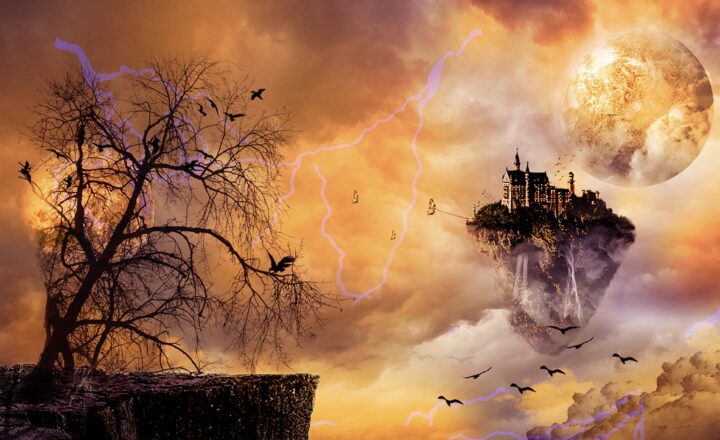The Most Intriguing Urban Legends and the Truths Hidden Behind Them
November 16, 2024

Urban legends are contemporary folktales, often rooted in superstition or social commentary, that capture our imagination and provoke curiosity. They can be entertaining yet chilling, revealing deeper truths about human behavior, fears, and societal norms. In this article, we will explore some of the most intriguing urban legends from around the world, uncovering the truths that lie beneath these fascinating stories.
1. The Vanishing Hitchhiker
One of the most enduring urban legends is that of the Vanishing Hitchhiker. The story typically involves a driver who picks up a young woman hitchhiking on a desolate road. The woman gives the driver an address to drop her off, but upon arrival, she mysteriously disappears, leaving behind only her coat or a note.
**Truth Behind the Legend:** Numerous variations of this story exist worldwide. In many cases, the hitchhiker is revealed to be a ghost, often of someone who died in a tragic accident at that location. This legend may reflect societal fears about the unknown and the belief in life after death, resonating with ancient folklore.
2. The Killer in the Backseat
This urban legend tells of a woman who is driving alone at night when she notices another vehicle following her. Nervous, she speeds up, and the other driver does too. Eventually, she makes it home and alerts the police, only to discover that the other driver was trying to save her—there was a killer hiding in her backseat.
**Truth Behind the Legend:** The myth plays on common fears of being pursued and the danger of strangers. While the narrative can be dramatic and frightening, it serves as a cautionary tale about trusting one’s instincts and being aware of potential dangers when alone.
3. The Babysitter and the Man Upstairs
In this cautionary tale, a babysitter receives a phone call from a caller who asks her to check on the children. Frightened, she learns that the call is coming from inside the house. The story adds a layer of terror as the babysitter realizes she’s in great danger.
**Truth Behind the Legend:** This legend has its roots in real-life crimes where babysitters were targeted. It underscores parental fears about leaving their children with someone else and emphasizes the need to take precautions in childcare settings.
4. The Choking Doberman
In this story, a woman returns home to find her Doberman choking. A vet discovers that the dog has bitten off a human finger. When the police investigate, they uncover a burglar who had his finger bitten during an attempted break-in.
**Truth Behind the Legend:** This tale illustrates the fears surrounding home security and the potential dangers lurking within our neighborhoods. While there may be no verified incidents fueling the legend, it reflects widespread concerns about crime and safety.
5. The Licked Hand
This urban legend involves a person who is home alone with a dog. During the night, they hear noises and feel reassured when they pet their dog, who licks their hand. However, upon discovering the owner’s death, they realize the licks were actually from their pet, providing a false sense of security.
**Truth Behind the Legend:** This legend taps into themes of comfort in animal companionship, juxtaposed with the threat of lurking danger. It serves as a stark reminder that not everything is as it appears and plays on the fears of betrayal by those we trust.
6. The Kidney Heist
One of the more gruesome urban legends, this tale describes a victim who wakes up in a bathtub full of ice, realizing their kidney has been stolen. The story often includes elaborate details about how the individual fell victim to an elaborate scam.
**Truth Behind the Legend:** While kidney thefts are rare, this legend preys on fears about medical malpractice and bodily autonomy. It highlights anxieties regarding trust in healthcare professionals and the general fear of becoming a victim.
7. The Spider Bite
This alarming urban legend revolves around a traveler who develops an inexplicable itch. After a trip to the doctor, they discover they have a spider living in their skin, having laid eggs that hatch!
**Truth Behind the Legend:** While the horror of the story is unfounded—spiders do not lay eggs under human skin—it reflects our fears regarding health and the prevalence of pests. This urban legend plays into phobias around cleanliness and safety in our own bodies.
8. The Poltergeist of the Green Lady
A particularly spooky legend involves the apparition of a woman, often described in green or white garments, who haunts a specific area—like a school or hospital. Those who encounter her report feelings of dread and eerie occurrences.
**Truth Behind the Legend:** Ghostly apparitions often reflect local history and tragic events. Many hotels and historical sites have rooms reported to be haunted, connecting the living to their region’s past traumas, fears, and unresolved issues.
9. The Slender Man
A figure from internet folklore, Slender Man is often depicted as a tall, faceless humanoid figure. He became a central figure in various stories and videos, causing a stir in popular culture and leading to more serious consequences, including a tragic crime.
**Truth Behind the Legend:** Slender Man’s origins highlight the power of internet culture and how urban legends can crossover into real life. It reflects fears about youth culture and the influence of media on behavior, illustrating the impact of fictional tales on society.
Conclusion
Urban legends continue to thrive in popular culture, serving as cautionary tales that reflect societal fears, anxieties, and the human experience. While often exaggerated or untrue, they share common threads that reveal much about our beliefs and values. By examining these legends, we gain insight into the psyche of different cultures and can better understand the truths—and fears—hidden behind them.
Whether these stories are shared around a campfire or told in hushed whispers at sleepovers, urban legends remain a captivating reflection of our collective anxieties and cultural narratives.







